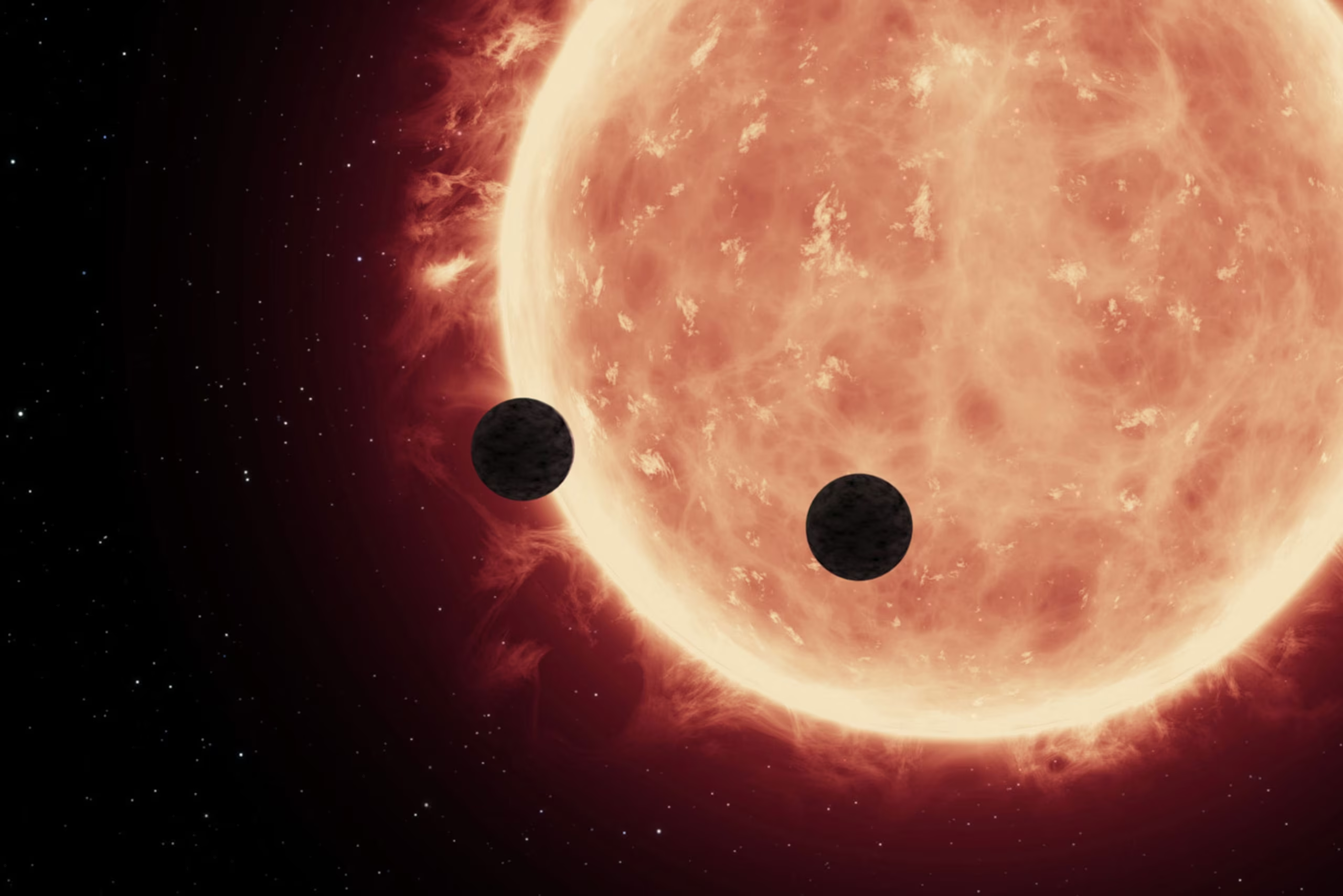Recent Observations Suggest Carbon Dioxide Atmosphere on TRAPPIST-1b
The innermost planet in the TRAPPIST-1 system, TRAPPIST-1b, may host a carbon dioxide-dominated atmosphere, according to a new study published in Nature Astronomy. Located approximately 40 light-years from Earth, the TRAPPIST-1 system has captivated astronomers with its seven Earth-sized exoplanets. While earlier findings suggested that intense stellar radiation might strip these planets of their atmospheres, new insights from the James Webb Space Telescope (JWST) indicate the potential presence of a hazy, CO₂-rich atmosphere on TRAPPIST-1b.
Evidence of Atmospheric Haze
The research presents intriguing data from measurements at 12.8 micrometres, which show a reflective haze in the planet’s upper atmosphere. This haze, according to the study, may cause the upper layers to emit radiation rather than absorb it, contradicting earlier models of atmospheric loss. Leen Decin, a co-author and researcher at KU Leuven in Belgium, emphasized that the new data allow scientists to explore possible atmospheric scenarios for TRAPPIST-1b, sparking renewed interest in its atmospheric composition and behavior.
Potential Volcanic Activity
The study also suggests that TRAPPIST-1b experiences high surface temperatures, which could be indicative of volcanic activity. Researchers have drawn comparisons to Titan, Saturn’s moon, which also exhibits surface and atmospheric interactions. However, Michiel Min from the SRON Netherlands Institute for Space Research highlighted that TRAPPIST-1b’s atmospheric chemistry might differ significantly from anything observed within our solar system, making it a unique subject for further exploration.
Broader Implications for Exoplanet Studies
These findings offer significant implications for understanding the atmospheres of exoplanets, particularly those subjected to high levels of stellar radiation. TRAPPIST-1b’s possible retention of a dense CO₂ atmosphere challenges prior assumptions about atmospheric erosion in such conditions. It also provides a foundation for studying habitability and atmospheric dynamics in other planetary systems, broadening our understanding of planetary evolution beyond the solar system.


















